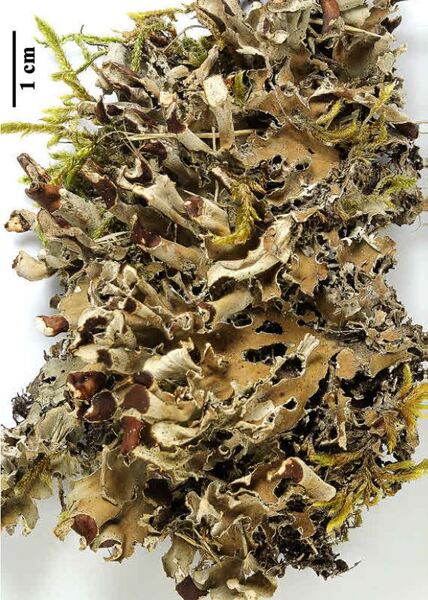Peltigera monticola Vitik.
Acta Bot. Fenn., 152: 64, 1994.
Synonyms:
Distribution: N - Frl (Martellos 2005), Ven (Vitikainen 1994), Piem (Ravera & al. 2018). C - Sar (Vitikainen 1994).
Description: Thallus foliose, heteromerous and dorsiventral, grey to brownish grey when dry, blackish when wet, loosely attached, up to 7(-10) cm wide. Lobes flattened to concave, contiguous, with rounded ends, c. 5 mm long and wide, with upturned, curled, arachnoid-tomentose and somewhat phyllidiate margins, somewhat scabrid and glabrescent in central parts. Lower surface pale, with diffuse veins which are pale in marginal parts, rusty red to reddish-brown in central parts, the rhizines simple to fasciculate near margins, darkened and tufted towards center. Upper cortex pseudoparenchymatous; medulla white; lower cortex absent. Apothecia frequent, saddle-shaped, terminal on erect lobules, brown. Paraphyses simple, distinctly thickened above. Asci 8-spored, fissitunicate, the thickened apex with a K/I+ blue ring, Peltigera-type. Ascospores 3(-5)-septate, hyaline to pale brown at maturity, fusiform, thin-walled, 39-52 x 4-5 μm. Photobiont cyanobacterial (Nostoc, the cells not in long chains). Spot tests: cortex and medulla K-, C-, KC-, P-, UV-. Chemistry: without lichen substances. Note: a recently-described and still rarely collected taxon related to P. rufescens and P. ponojensis, found on soil and amongst mosses over calcareous substrata, mostly in upland areas; known from the Italian Alps and the mountains of Sardinia, but probably more widespread. Its status and the relation to P. ponojensis, however, need further study.
Growth form: Foliose, broad lobed
Substrata: soil, terricolous mosses, and plant debris
Photobiont: cyanobacteria, filamentous (e.g. Nostoc, Scytonema)
Reproductive strategy: mainly sexual
Commonnes-rarity: (info)
Alpine belt: very rare
Subalpine belt: rare
Oromediterranean belt: extremely rare
Montane belt: very rare
Submediterranean belt: absent
Padanian area: absent
Humid submediterranean belt: absent
Humid mediterranean belt: absent
Dry mediterranean belt: absent
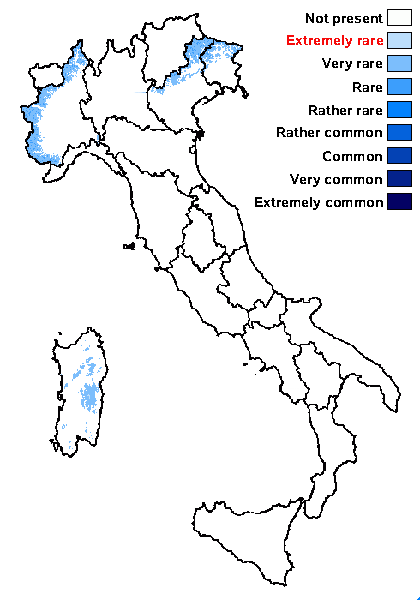
Predictive model
Herbarium samples
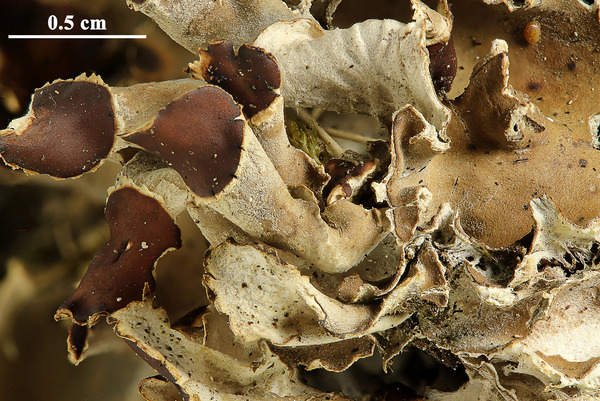

Felix Schumm – CC BY-SA 4.0
[19467], Germany, Hessen, Amöneburg bei Marburg, sonnige Basaltblöcke in einer Hangwiese kurz vor dem Ortseingang, 50.7896° N, 8.91995° E, 324 m. Leg. F. Schumm, 01.08.2016, det. F. Schumm
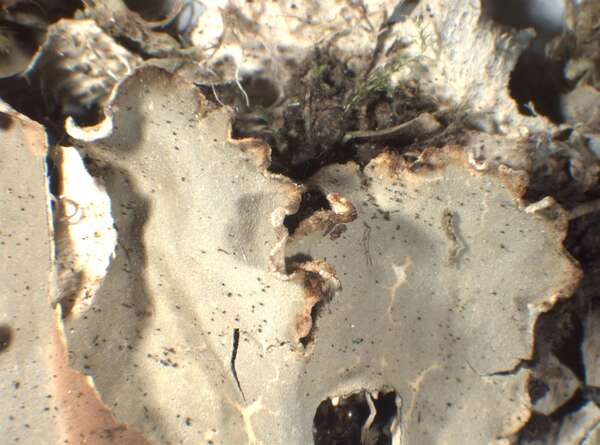

P.L. Nimis; Owner: Department of Life Sciences, University of Trieste
Herbarium: GZU Herb.Poelt (125-88)
2003/04/28
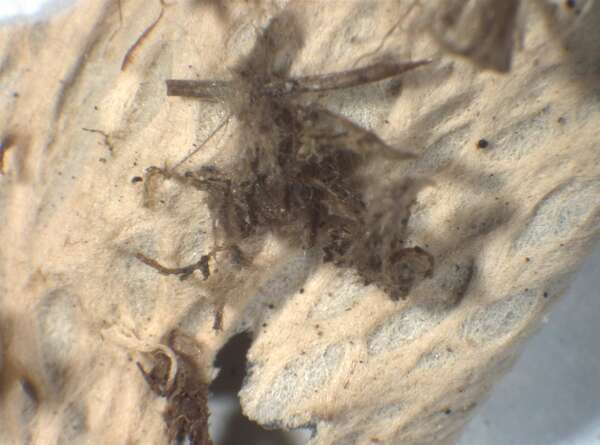

P.L. Nimis; Owner: Department of Life Sciences, University of Trieste
Herbarium: GZU Herb.Poelt (125-88)
2003/04/28
lower surface with rhizines
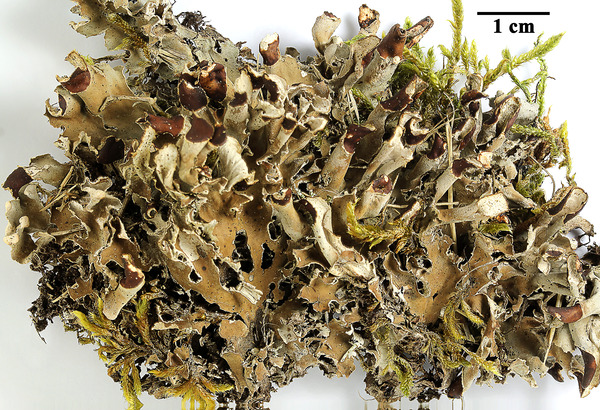

Felix Schumm – CC BY-SA 4.0
[19467], Germany, Hessen, Amöneburg bei Marburg, sonnige Basaltblöcke in einer Hangwiese kurz vor dem Ortseingang, 50.7896° N, 8.91995° E, 324 m. Leg. F. Schumm, 01.08.2016, det. F. Schumm


Felix Schumm – CC BY-SA 4.0
[19467], Germany, Hessen, Amöneburg bei Marburg, sonnige Basaltblöcke in einer Hangwiese kurz vor dem Ortseingang, 50.7896° N, 8.91995° E, 324 m. Leg. F. Schumm, 01.08.2016, det. F. Schumm
Growth form: Foliose, broad lobed
Substrata: soil, terricolous mosses, and plant debris
Photobiont: cyanobacteria, filamentous (e.g. Nostoc, Scytonema)
Reproductive strategy: mainly sexual
Commonnes-rarity: (info)
Alpine belt: very rare
Subalpine belt: rare
Oromediterranean belt: extremely rare
Montane belt: very rare
Submediterranean belt: absent
Padanian area: absent
Humid submediterranean belt: absent
Humid mediterranean belt: absent
Dry mediterranean belt: absent

Predictive model
| Herbarium samples |


Felix Schumm – CC BY-SA 4.0
[19467], Germany, Hessen, Amöneburg bei Marburg, sonnige Basaltblöcke in einer Hangwiese kurz vor dem Ortseingang, 50.7896° N, 8.91995° E, 324 m. Leg. F. Schumm, 01.08.2016, det. F. Schumm


P.L. Nimis; Owner: Department of Life Sciences, University of Trieste
Herbarium: GZU Herb.Poelt (125-88)
2003/04/28


P.L. Nimis; Owner: Department of Life Sciences, University of Trieste
Herbarium: GZU Herb.Poelt (125-88)
2003/04/28
lower surface with rhizines


Felix Schumm – CC BY-SA 4.0
[19467], Germany, Hessen, Amöneburg bei Marburg, sonnige Basaltblöcke in einer Hangwiese kurz vor dem Ortseingang, 50.7896° N, 8.91995° E, 324 m. Leg. F. Schumm, 01.08.2016, det. F. Schumm


 Index Fungorum
Index Fungorum
 GBIF
GBIF

